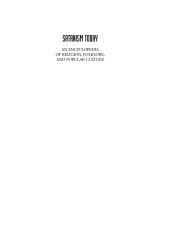I. VAMA MARGA Foundations Of The Left-Hand Path - staticfly.net
I. VAMA MARGA Foundations Of The Left-Hand Path - staticfly.net
I. VAMA MARGA Foundations Of The Left-Hand Path - staticfly.net
Create successful ePaper yourself
Turn your PDF publications into a flip-book with our unique Google optimized e-Paper software.
omnipresent Ether, which is symbolized in the sexual act. Thus, the forces<br />
94<br />
that compose the universe are taken into the celebrant's bodies, a practice<br />
Western magicians will see as comparable to the summoning of the four<br />
elements traditional to Hermetic ceremonies. Tantricists of various sects have<br />
accorded other esoteric symbology to the five elements, above and beyond<br />
95<br />
their literal meaning and obvious taboo status. <strong>The</strong> eating of matsya, or fish,<br />
prohibited to vegetarian Hindus, has been thought to represent the feminine<br />
principle essential to the left-hand path. Alternately, the "fish" might be<br />
interpreted as the transformative currents that "swim" through the left ida and<br />
right pingala channels of the subtle body, and the element of prana, or air,<br />
that also swims through the ether and the physical body.<br />
<strong>The</strong> ritual ingestion of Mamsha, or strongly spiced meat, not only<br />
breaks the Hindu taboo against flesh-eating. It also symbolizes the initiate's<br />
recognition that left-hand path initiation occurs during his/her lifetime within<br />
the flesh, rather than in a life-after-death state. <strong>The</strong> word for meat, mamsha,<br />
is also decoded according to twilight language as meaning ma (tongue) and<br />
amsha (speech), representing the proper pronunciation of mantra so<br />
important to left-handed rites.<br />
Mudra (parched grain, or dried beans) has been interpreted as a<br />
coded reference to the withholding of bodily energy and essence manifested<br />
in some male Tantrika's retention, or reimbibation, of semen for metaphysical<br />
purposes. As a symbol of vegetable life, mudra can be thought of as the<br />
element earth. <strong>The</strong> female partner in left-hand sexual rites is often known as<br />
the mudra, a designation connected to the yogic ritual hand gestures also<br />
known as mudra, or "that which gives delight".<br />
Madya is more than wine; it is the liquid symbol of altered<br />
consciousness and the spiritual intoxication of the visionary, a divine<br />
drunkenness. As an elemental symbol, wine is related to fire. <strong>The</strong> drinking of<br />
wine in the Panchamakara ritual celebrates the application of joy to initiatory<br />
ends, breaking with the sober-minded orthodoxy of the established priestly<br />
class of Brahmins. John Woodroffe, the pioneering Western scholar of<br />
Tantra, mentions in his Shakti and Shakta that the Tantric texts state that the<br />
difference separating the left-hand and the right-hand paths can best be<br />
compared to the contrast between wine and milk. Significantly, wine and<br />
intoxication are considered to be of a feminine shakti nature in Hindu lore,<br />
and many Hindu goddesses are understood to be incarnated in the material<br />
world as the elemental spirits of intoxicating, maya substances.<br />
Drunkenness, universally prohibited by ascetic, pleasure-denying<br />
creeds around the world, can be found as a symbol for many other divine<br />
beings representative of the left-hand path values of disorder, creative chaos,<br />
and Eros. For instance, in the relatively puritanical ancient Egyptian society,<br />
the sexually insurgent storm and war god Set and his Priesthood were<br />
strongly associated with drunkenness; an especially powerful desert wine was<br />
known as the Gift of Set. Set's striking similarity with Shiva in his fearsome,<br />
atavistic guise as the previously described Rudra the Howler is not without<br />
relevance. In the later Middle East, Sufi heretics within Islam of a left-hand<br />
path bent continued this tradition, composing poetry comparing their visions<br />
to the tempestuous intoxication stirred by wine and beautiful women or boys.<br />
96<br />
However, it must be remembered that this ritual drunkenness – like<br />
all of the sensory pleasures of the left-hand path – is entered into only when<br />
the adept has already trained his or her mind to transcend normal waking<br />
consciousness. In the milder left-hand path sects, only a token amount of<br />
alcohol is consumed during the rite, merely enough to break the taboo and<br />
symbolize the esoteric principle inherent in the wine. In others, especially the<br />
extreme Aghori school, copious quantities are quaffed from skull cups to
















